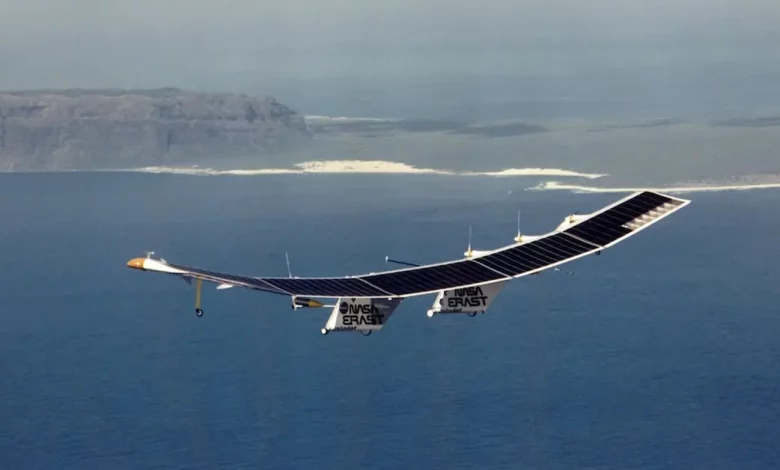Daily Current Affairs for UPSC
High Altitude Pseudo Satellite (HAPS)
Syllabus- Science and Technology (GS Paper-3)

Context- Recently CSIR-National Aerospace Laboratories (NAL) has successfully tested an unmanned aerial vehicle, called High Altitude Pseudo Satellite (HAPS) at Challakere, Karnataka.
Key Highlights
- The 5-metre-long system, with a wingspan of 11 metres and weighing 23 kg, rose to about 3 km and stayed put for approximately 8 hours.
- A collection of tests were planned and they are predicted to culminate in a full-bodied craft – with a wingspan of 30m (nearly as much as a Boeing 737) – through 2027.
- It could be capable of upward thrust to 23 km and stay airborne for at least 90 days.
- NAL ambitions to lay out and build the HAPS’ propellers, battery management machine, carbon-composite airframe, flight-control system, and the high-powered electric motors that could withstand extreme temperature stages.
- Last month, in an unrelated assignment, a Bengaluru-based private company carried out the first test-flight of a solar-powered, long-endurance drone that flew for 21 hours.
About
- Since the 1990s, several initiatives have been launched globally to explore the potential applications of High Altitude Pseudo Satellites, also called High Altitude Platform Stations (HAPS).
- HAPS are aircraft located above 20 km altitude, in the stratosphere, for very-long-period flights counted in months and even years.
- These unmanned aircraft may be airplanes, airships or balloons.
Benefits/Advantages of HAPS
- These sun-powered automobiles had been designed to plug the lacking link among unmanned aerial vehicles (UAVs) flying in lower altitudes and traditional satellites in the area.
- The use of HAPS is considered for quite a few programs together with:
- telecommunications,
- emergency/public protection communications,
- intelligent transportation structures,
- maritime surveillance,
- environmental tracking,
- land borders control programs, and many others.
- Compared to ground based total communication networks, HAPS can cover larger areas with less interference.
- They can also assist ease data transfer whilst used as an intermediate conduit between a satellite and ground based telecom networks.
- Unlike normal satellites that are high-priced to build and launch, HAPS cost a lot less and are simpler to launch.
Significance w.r.t. India
- In India, Hindustan Aeronautics Limited (HAL) in 2022 announced that it is developing a “futuristic” high altitude pseudo satellite in collaboration with a start-up company.
- With a long and complex land border of about 15,000 km and a shoreline of approximately 7,500 km, safeguarding the borders is vital for India and necessitates various solutions.
- Hovering at the edge of the Earth’s surroundings, HAPS can offer services closer to efficient border patrolling, tracking moves deep into the enemy territory or in the deep seas with their sharp focus on one place.
- Equipped with high-definition optical and infra-red cameras, today’s sensors, these aerial structures are appropriate for spherical-the-clock missions, border patrolling, goal monitoring, maritime surveillance and navigation, and even missile detection.
- China’s country-owned aerospace and defense conglomerate, Aviation Industry Corporation of China (AVIC), has been operating on varied HAPS systems for surveillance functions.
- In 2018, it successfully examined its sun-powered Morning Star drone which can reportedly live airborne for months.
Source: The Hindu





.png)



